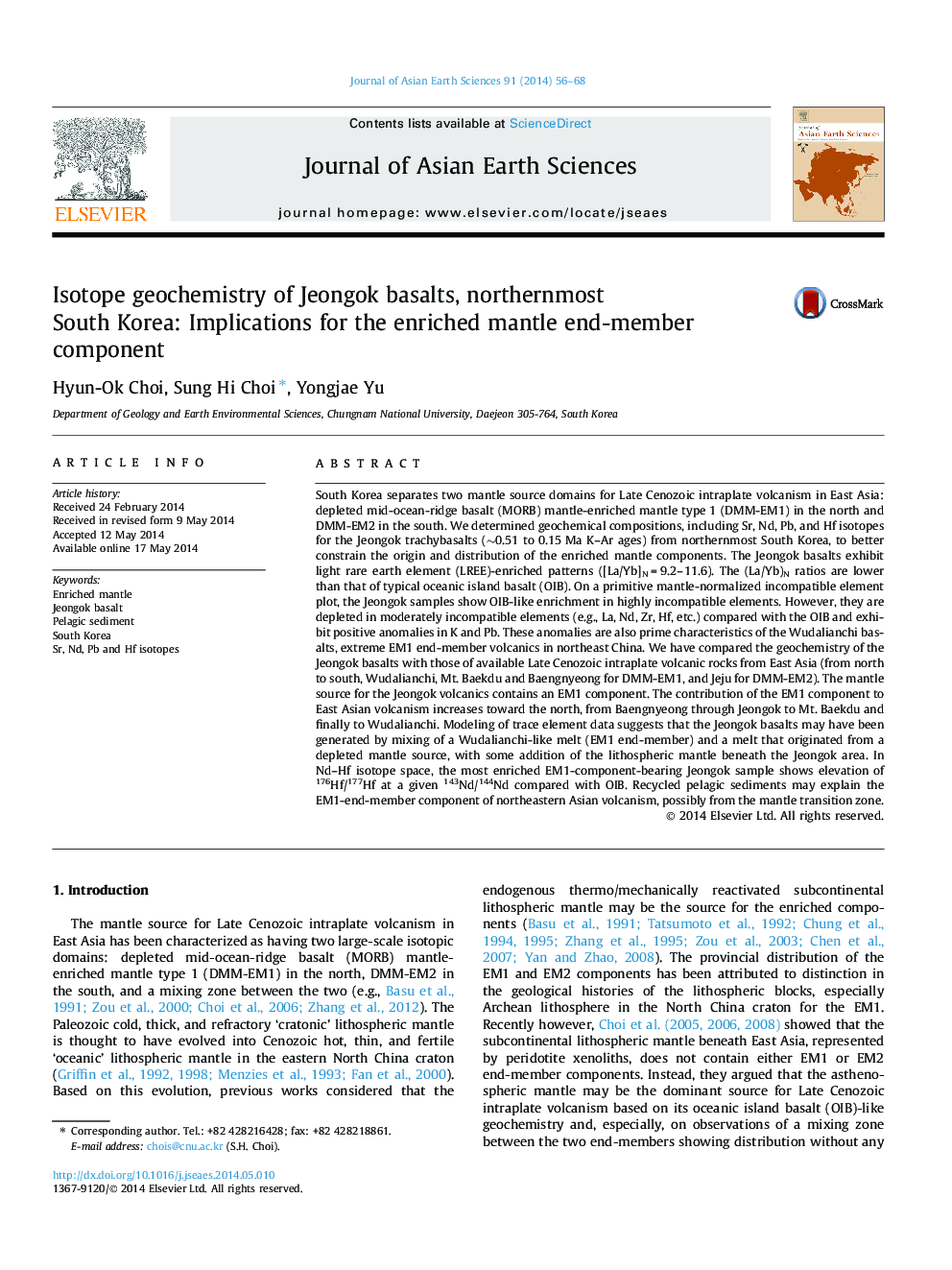| کد مقاله | کد نشریه | سال انتشار | مقاله انگلیسی | نسخه تمام متن |
|---|---|---|---|---|
| 4730549 | 1640377 | 2014 | 13 صفحه PDF | دانلود رایگان |
• We provide Sr–Nd–Pb–Hf isotopes for basalts from Jeongok of northernmost S. Korea.
• Two domains of East Asian asthenosphere: DMM-EM1 in north and DMM-EM2 in south.
• The Nd–Hf isotopic decoupling is observed in Jeongok basalt.
• Recycled pelagic sediment might be the source for EM1 component of East Asia.
South Korea separates two mantle source domains for Late Cenozoic intraplate volcanism in East Asia: depleted mid-ocean-ridge basalt (MORB) mantle-enriched mantle type 1 (DMM-EM1) in the north and DMM-EM2 in the south. We determined geochemical compositions, including Sr, Nd, Pb, and Hf isotopes for the Jeongok trachybasalts (∼0.51 to 0.15 Ma K–Ar ages) from northernmost South Korea, to better constrain the origin and distribution of the enriched mantle components. The Jeongok basalts exhibit light rare earth element (LREE)-enriched patterns ([La/Yb]N = 9.2–11.6). The (La/Yb)N ratios are lower than that of typical oceanic island basalt (OIB). On a primitive mantle-normalized incompatible element plot, the Jeongok samples show OIB-like enrichment in highly incompatible elements. However, they are depleted in moderately incompatible elements (e.g., La, Nd, Zr, Hf, etc.) compared with the OIB and exhibit positive anomalies in K and Pb. These anomalies are also prime characteristics of the Wudalianchi basalts, extreme EM1 end-member volcanics in northeast China. We have compared the geochemistry of the Jeongok basalts with those of available Late Cenozoic intraplate volcanic rocks from East Asia (from north to south, Wudalianchi, Mt. Baekdu and Baengnyeong for DMM-EM1, and Jeju for DMM-EM2). The mantle source for the Jeongok volcanics contains an EM1 component. The contribution of the EM1 component to East Asian volcanism increases toward the north, from Baengnyeong through Jeongok to Mt. Baekdu and finally to Wudalianchi. Modeling of trace element data suggests that the Jeongok basalts may have been generated by mixing of a Wudalianchi-like melt (EM1 end-member) and a melt that originated from a depleted mantle source, with some addition of the lithospheric mantle beneath the Jeongok area. In Nd–Hf isotope space, the most enriched EM1-component-bearing Jeongok sample shows elevation of 176Hf/177Hf at a given 143Nd/144Nd compared with OIB. Recycled pelagic sediments may explain the EM1-end-member component of northeastern Asian volcanism, possibly from the mantle transition zone.
Journal: Journal of Asian Earth Sciences - Volume 91, September 2014, Pages 56–68
